Scientists believe 5,000-year-old skin etchings were therapeutic
Tattoos are traditionally used to decorate the skin, but now archaeologists believe skin etchings discovered on a 5,000-year-old mummy could have been intended as therapy. The marks found on Ötzi the iceman reveal that tattoos could have been used as a primitive form of acupuncture. The iceman's tattoos are largely seen on the parts of his body that endured wear-and-tear, causing archaeologists to liken the practice of tattooing to acupuncture, which is itself an ancient treatment for joint distress.

While tattoos are traditionally used to decorate the skin, archaeologists believe skin etchings discovered on a 5,00-year-old mummy (pictured) could have been intended as therapy
Ötzi's body art is the only known example of real-life ancient tattoos and reveal how the marks were made in Copper Age Europe. Writing in the publication Archaeology, U.S. experts Jarrett A. Lobell and Eric A. Powell said Ötzi's body, which was almost perfectly preserved in ice, provides unique evidence of early medicine for archaeologists. They said Ötzi got his 50 tattoos - most of which are lines and crosses - by enduring a series of small incisions in his skin, which were then rubbed with charcoal to make the marks.
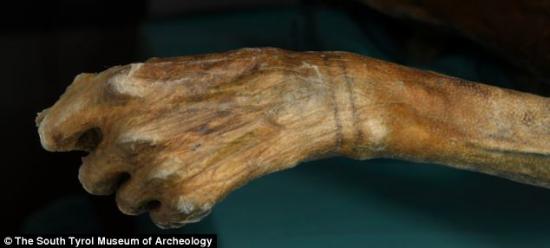
The ice man's tattoos are largely seen on parts of the body that endured wear-and-tear, causing archaeologists to like the practice to acupuncture, which is itself an ancient treatment for joint distress
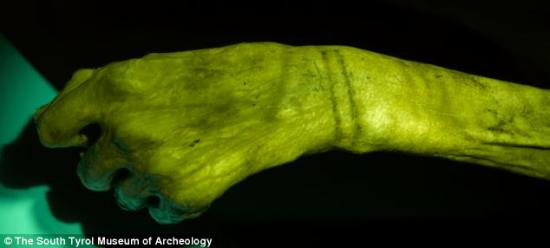
Radiological images of the tattooed areas of the mummy show degenerative areas under the tattoos that could have caused pain
'Because they are all found on parts of the body that show evidence of a lifetime of wear and tear - the ankles, wrists, knees, Achilles tendon, and lower back, for example - it’s thought that Ötzi’s tattoos were therapeutic, not decorative or symbolic,' they added. When the mummy was first studied, experts were shocked at Ötzi's tattooed skin as they had never seen real examples of Copper Age tattoos before. They were also surprised as it is popularly thought that acupuncture was invented more than 2,000 years later in Asia and the mummy's markings look like they have been made over joints under stress such as the ankles and wrists.
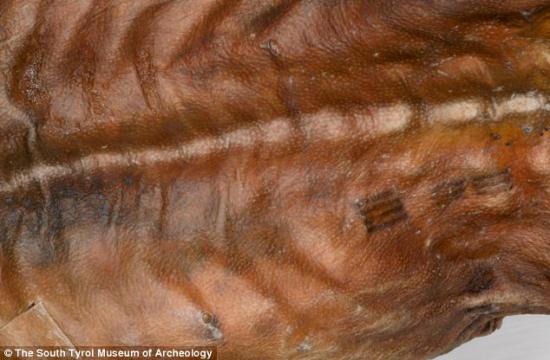
Ötzi's tattoos are the only known examples of real-life ancient tattoos as all other examples are found in artwork at the time and reveal how the marks were made in Copper Age EuropeOtzi Iceman Tattoo
They wrote: 'Of course we can't be absolutely sure why these tattoos were placed in those locations. It's possible Ötzi's people believed those regions of the body were spiritually significant. Still, it's very possible that this was an early effort at acupuncture.' If this is the case, it would appear that the tattoos were not originally intended to be merely decorative or symbolic, but could have been used as a kind of medicine to treat ailments like rheumatism, and arthritis, which are also treated using acupuncture. A spokesman for the South Tyrol Museum of Archaeology, told Mail Online:' It seems common opinion that the Iceman tattoos are not ornamental but therapeutic tattoos for pain relief.
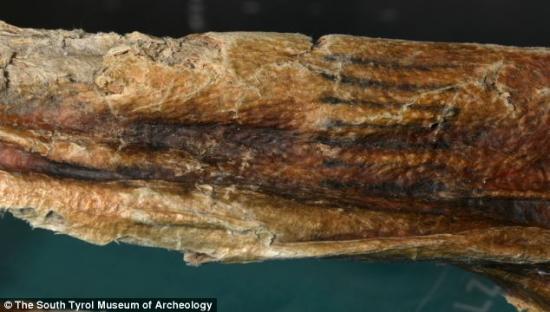
Ötzi got his 50 tattoos by enduring a series of small incisions in his skin, which were then rubbed with charcoal to make the marks.
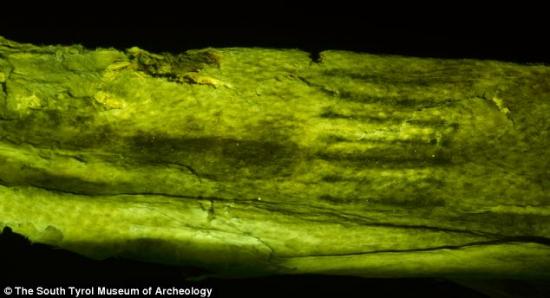
Most of Otzi's tattoos are lines (pictured) and crosses found on major joints of his body. The mummy is specially illuminated here to show the tattoos clearly
'Radiological images of the tattooed areas show degenerative areas under the tattoos that could have caused pain. 'As the tattooing spots lie approximately over the acupuncture medians, it seems common opinion that they could have been use for that.' Professor Frank Rühli, head of the Centre for Evolutionary Medicine at the University of Zurich, told Mail Online the tattoos were probably a combination of decorative art and therapy.
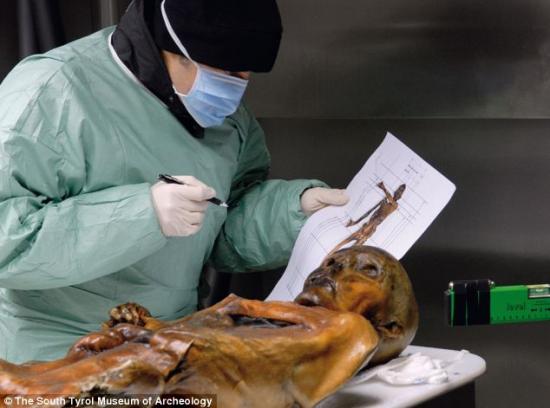
Archaeologists believe that judging by the clothing, tools and weapons found with the mummy fozen in the Alps on the Austrian, Italian border two decades ago, Ötzi was a herder or a chieftain in Copper Age Europe
He said that while there might be a connection to suggest the tattoos functioned as a form of ancient acupuncture, it is difficult to see which ailments the mummy suffered from, so an indication of the marks being therapeutic is 'likely' but cannot be proven as there are not a number of similar bodies to study, found in the same location that are the same age. The spokesman for the South Tyrol Museum of Archaeology said that if indeed the tattoos were created as a form of acupuncture, 'people of the Iceman's times would have known not only about nature around them, but also about the human body and its reactions - I think this is remarkable.' While the reasons for creating the tattoos may not be agreed upon, archaeologists believe that judging by the clothing, tools and weapons found with the mummy frozen in the Alps on the Austrian, Italian border two decades ago, Ötzi was a herder or a chieftain in Copper Age Europe.
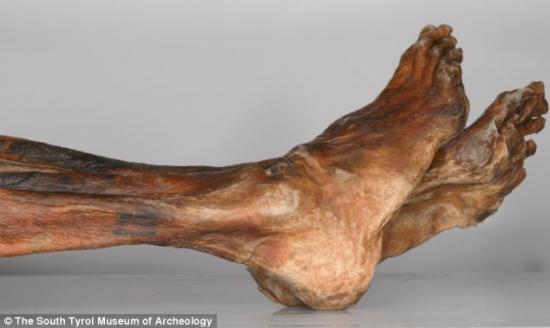
it would appear that the tattoos were not originally intended to be merely decorative or symbolic, but could have been sued as a kind of medicine to treat ailments like rheumatism, and arthritis, which are also treated using acupuncture